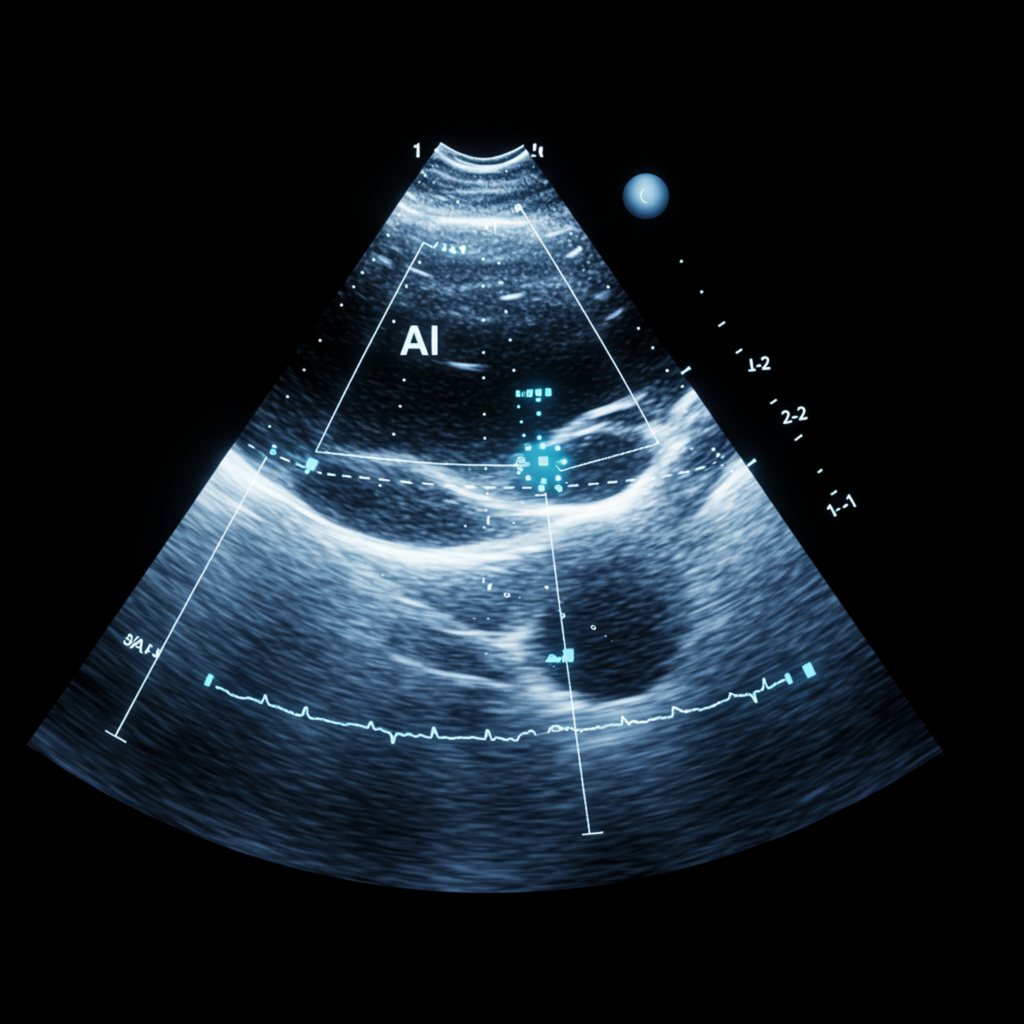The Role of Precise Echo Labeling in AI Diagnostics:
AI support in echocardiography has evolved to include automated segmentation, view classification, auto measurements, and AI-generated reports and diagnoses. Several promising studies using deep learning (DL) approaches have been published to classify standard echo views (e.g., apical and parasternal views), heart structure segmentation (e.g., ventricle, atrium, septum, myocardium, and pericardium), and cardiac disease prediction (e.g., heart failure, hypertrophic cardiomyopathy, cardiac amyloidosis, and pulmonary hypertension) in recent years.
Precise echo labeling is crucial for enabling accurate AI diagnosis and prognosis. AI algorithms rely on labeled data to learn patterns and relationships between image features and clinical outcomes. The more accurate and detailed the labeling, the better the AI can perform in tasks such as automated segmentation, view classification, and disease detection. This ultimately leads to more reliable and consistent diagnostic results.
Benefits of AI in Echocardiography: Enhanced Accuracy and Reproducibility:
AI has the potential to provide highly accurate and reproducible test results in echocardiography. Unlike human operators, AI algorithms are not subject to fatigue or variability in interpretation. They can consistently apply the same criteria and measurements to each image, reducing the risk of human error and improving the reliability of the results. This is particularly valuable in longitudinal studies where consistent measurements are essential for tracking disease progression or response to treatment.
AI’s ability to deliver consistent and accurate results contributes to better patient care by reducing the likelihood of misdiagnosis or delayed treatment. AI algorithms can assist in cardiac disease prediction by analyzing large datasets and identifying subtle patterns that may be missed by human observers. By providing clinicians with more reliable information, AI can help them make more informed decisions about patient management.
Improved Workflow Efficiency with AI:
One of the most significant benefits of AI in echocardiography is its ability to streamline tasks and reduce the workload for examiners. AI algorithms can automate many of the time-consuming and labor-intensive steps involved in echocardiographic analysis, such as image segmentation, measurement of cardiac dimensions, and calculation of functional parameters. This frees up clinicians to focus on more complex tasks, such as interpreting the results and developing treatment plans.
The use of AI can also lead to shorter waiting times for patients. By automating tasks and reducing the time required for analysis, AI can help to expedite the echocardiographic workflow. This means that patients can receive their results more quickly, leading to faster diagnosis and treatment. Reduced workloads for examiners means that they are better equipped to address urgent cases and manage their schedules more effectively.
